|
biographie
|
| |
|
|
1960
|
Yang Xiaojian 杨小健 literally the strong athlete, was born in Taiyuan, capital of Shanxi
|
| |
Province, in a family of sportsmen.
|
| |
His father, Yang Shuiyin, head book-keeper at the Zhongyan glass Company in Taiyuan,
|
| |
was one of the first official table tennis umpires in the Républic of China. . |
| |
His mother, Yang Yueying acknowledged by the authorities as a National athlete |
| |
beat the table tennis world champion three times. |
|
|
|
|
1964
|
As a child, he spent hours playing with colours, and drawing on the floor using red brick. |
| |
His mother taught art art a primary school, and gave him pictures to colour, and books
|
| |
with calligraphy, to copy. |
| |
|
|
1967
|
He started at the Haibianjie primary school in Taiyuan. Here, he was able to take part
|
|
|
in a variety of activities, and in the evenings he helped his mother to make copies
|
| |
of the newspapers, in order to earn some pocket-money. His written works was often
|
| |
shown to others as an example.
|
| |
|
|
1969
|
He attended Nanhajiie school and helped illustrate the wall news.
|
|
|
|
|
1970
|
His mother was sent to the village Guxian. He accompanied her there and had a taste
|
| |
of hard agricultural work.
|
| |
|
|
1972
|
He went back to school, where he showed a keen interest in reading.
|
| |
It was here that he first met Yie Qing who later became his wife : Yie Qing
|
| |
|
|
1976
|
He joined the Army, PE Special Forces. In his spare time, or while he was on standby,
|
| |
he spent his time doing calligraphy, on the floor, using a stick.
|
|
|
When this was noticed, the Army offered him the job of doing the lettering on military maps.
|
| |
However Yang Xiaojian wanted to learn more, and in order to get hold of more calligraphy
|
| |
books, he wrote a letter which was published in the China Youth newspaper. As a result,
|
| |
he was sent hundreds of books, including one by Li Zhengshi 李正時, a teacher in Huangshi,
|
| |
whose calligraphy particularly impressed him. From that moment onwards, he could only
|
| |
think of one thing : that he wanted to study.
|
| |
|
|
1981
|
He had to wait another year before being demobilised and enjoying a taste of independence.
|
| |
He worked on different styles of ancient calligraphy with different teachers : :
|
| |
- The Han dynasty, with Yuan Xulin 袁旭臨
|
| |
- Li style with Yan Jun 閻俊
|
| |
- Cursive style with Tian Shuchang 田樹萇
|
| |
|
|
1984
|
He married Yie Qing |
|
1985
|
Birth of his second daughter : Xibei
|
| |
|
|
1989
|
He took part in a calligraphy competition for the first time, and won First Prize; he then
|
| |
entered competitions on a regular basis, and the following year he won the Gold Medal. |
| |
in Sanya, and Third Prize in Beijing.
|
| |
|
|
1993
|
Birth of his second daughter : Jiayuan
|
| |
|
|
1994
|
His lenghthy discussions with professor Wang Yong 王鏞 calligrapher, Zhao Lengyue
赵冷月
|
|
|
the well known artist, Liu Jiu'an 劉九庵 of the Palace Museum, helped him make progress
|
|
|
not only with his painting but in his way of thinking.
|
| |
|
|
1998
|
After the death of his father, he decided to travel to Hong Kong, Macau and Thailand |
| |
with his mother.
|
| |
|
|
1999
|
He bought an appartment west of Shanghai in Kanghong Garden..
|
| |
|
|
2000
|
He travelled to Korea and to China : to Sanya and the Yunnan, Lijiang, to the mountains
|
| |
of Yulong Snow and to Shangri-La, gathering ideas for paintings.
|
| |
He reads a great deal, and was interested in the painters Motherwell, Dubuffet, Sulerque,
|
| |
De Kooning, De Pierce.
|
| |
His work was becoming more abstract.
|
| |
|
|
2005
|
In Shanghai, he set up his second studio Base of Ink at 50 Moganshanan Lu, and put his
|
| |
his work on display.
|
| |
He took part in a number of collective exhibitions of calligraphy and contemporary Art,
|
| |
in Beijing, Seoul, Hong-Kong, Macao, Shanghai.
|
| |
|
|
2006
|
Exhibitions of his work were held in Japan, at the Soukoku gallery in Kyoto and the North
|
| |
Kamakura gallery, in Tokyo.
|
| |
|
|
2007
|
The Kyoto city Museum held an exhibition of his work. |
| |
|
| |
He lives and works in Shanghai China. |
| |
|
| |
Danièle Sicard
|
| |
|
|
•
|
| |
|
| |
Solo exhibitions selection
|
| |
|
|
1992
|
Kobe Kyoto Osaka Japan
|
|
2005
|
Picture of Triturate The Ink Yang Xiaojiang - Wei Ligang Contemporary Gallery Beijing China
|
|
2005
|
Base of Ink Shanghai China
|
|
2006
|
Soukoku Gallery Kyoto Japan
|
|
2006
|
North Kamakura GalleryTokyo Japan
|
|
2007
|
Twoline Gallery Beijing China
|
|
2007
|
Municipal Museum of Art Kyoto Japan
|
|
2007
|
Julie et Hélène Gallery Paris France
|
| |
|
| |
Collective exhibitions selection
|
| |
|
|
1993
|
International Famous calligraphers in 20th Century Beijing China
|
|
1998
|
7th exhibition of calligraphy and Seal cutting Galerie China Art Beijing China |
|
1999
|
3rd exhibition for couplet writing Galerie China Art Beijing Chine
|
|
2003
|
1st exhibition for Youngs and Mi-aged calligraphers'works in Shanxi Taiyuan China
|
|
2003
|
Fifteen Nominated Famous calligraphers Nanjing Chine
|
|
2004
|
2nd National exhibition for fashionable Writing style Jinri Art Museum Beijing China
|
|
2005
|
Three artists Hong Kong Art association Hong Kong China
|
|
2005
|
International Modern Calligraphys Seoul Korea
|
|
2005
|
Great Theatre Gallery Shanghai China
|
|
2005
|
exhibition of contemporary Art O.C.Space Beijing China
|
|
2005
|
Construct The Ink Map Yang Xiaojian & Wei Ligang To Day Arts Museum Beijing Hong Kong
|
|
2006
|
Exhibition of contemporary Art Shang-Shang Museum Beijing China
|
| |
|
|
•
|
| |
| |
|

|
| |
| |
|
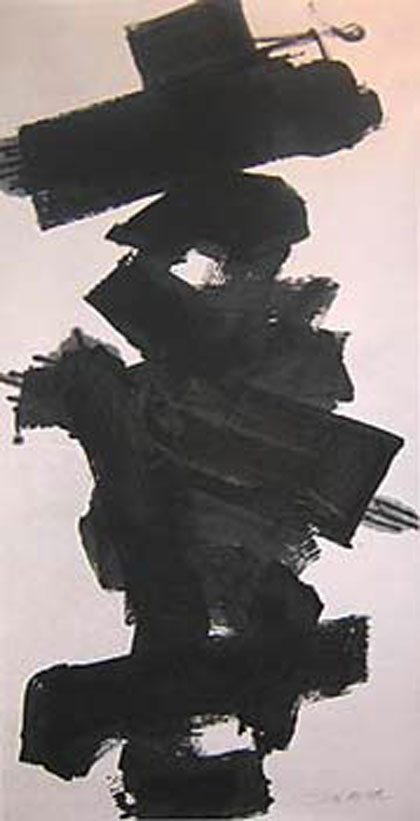
|
| |
| |
|
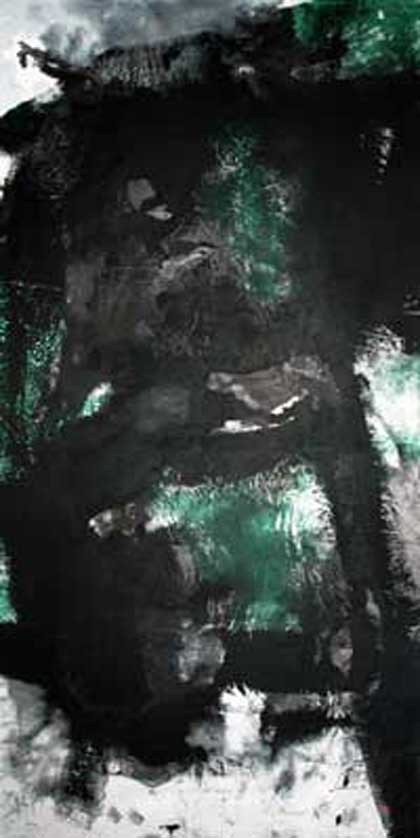
|
| |
| |
|
•
|
|
|
|
|
|
60 Poems of Xi Murong
|
Pen Calligraphy collection
|
| |
|
|
1989
|
| |
|
|
|
| |
|
300 Tang Poems
|
Pen Calligraphy collection
|
| |
|
|
1990
|
| |
|
|
|
| |
|
Wonder of Pen Calligraphy
|
Pen Calligraphy collection
|
| |
|
|
1991
|
| |
|
|
|
|

|
|
Picture of Triturate the Ink
|
Modern Calligraphy collection
|
| |
Construct the Ink Map
|
2005
|
| |
A collective exhibition of contemporary
|
|
| |
calligraphic paintings
|
|
| |
Yang Xiaojian & Wei Ligang |
|
| |
29 cm x 24 cm
|
|
| |
|
219 p |
|
| |
|
isbn : 962 85723 9 3
|
|
| |
|
|
|
| |
|
|
|
|
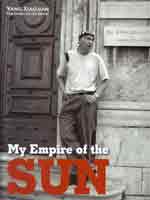
|
|
My Empire of the Sun
|
Pen Calligraphy collection
|
| |
Monographie des oeuvres 1998 - 2006 Yang Xiaojian 2006
|
| |
Foreword : |
|
| |
Fan Di-An : From Calligraphy to Scripting
|
|
| |
Liu Xiao-Chun : A Calligrapher ink-brushing
|
|
| |
in Beijing and Shanghai
|
|
| |
Tang Feng : The Wash-Ink Nietzsche
|
|
| |
numerous reproductions |
|
| |
|
29,5 cm x 25 cm
|
|
| |
|
in chinese in english
|
|
| |
|
350 p |
|
| |
|
isbn : 962 86523 7 0
|
|
| |
|
|
|
| |
|
|
|
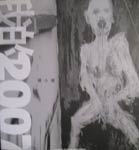 |
|
MY 我的 2007
|
2007
|
| |
The photography of Yang Xiaojian |
|
| |
Presentation : Makang - Men Cong |
|
| |
21,5 cm x 23 cm
|
|
| |
isbn : 978 988
17 150 2 9
|
|
| |
|
|
| |
|
|
|
| |
|
|
|
| |
|
|
|
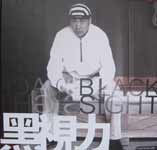 |
|
Black Sight 黑視力
|
2011
|
| |
Collection of personal works |
|
| |
Foreword : From Rebellion to Creation;
|
|
| |
Yang Xiaojian's journey in calligrzaphy by Fan Di-An
|
| |
The Edges of Darkness by David Paskett
|
|
| |
Sinking into the Blakness by Tang FENG |
|
| |
|
Woks :
|
|
| |
|
My classic My calligraphy My landscape Albums
|
| |
|
My Ink Base My Experimental Plant My Hardedge Blacksight |
| |
|
My Photography |
|
| |
|
Artist Biography |
|
| |
|
numerous reproductions |
|
| |
|
357 p |
|
| |
|
isbn : 978 988 19274 3 9
|
|
| |
|
|
|
|
••
|
| |
|
|
|
|
|
|
|
|
|
|
|
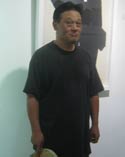
|
|
It's the friend. Who knows how to reveal the intelligence of
black.
|
| |
Clouds dissolved by the breeze, torn apart. Absorbed by the
paper.
|
| |
The
destruction of writing to make it speak. Evidence.Which shows its
viscera.
|
| |
No aestheticism. Abstraction pure, precise, sensitive, monumental.
Where
|
| |
sometimes blankness is painted white.
|
| |
Xiaojian has mastered all the media, covering all the
possibilities.
|
| |
His
painting beats the chamade. Today, Xiaojian reflects the
heartbeat of the world.
|
| |
|
Michel Nau
|
|
|
| |
|
|
|
|
|
|
|

![]()